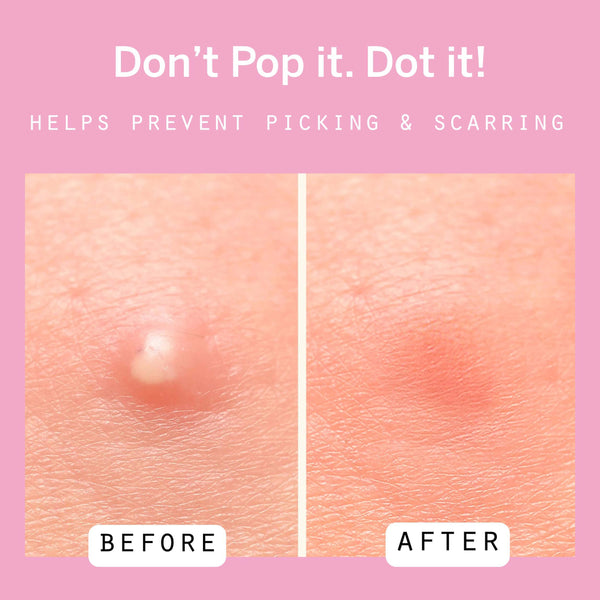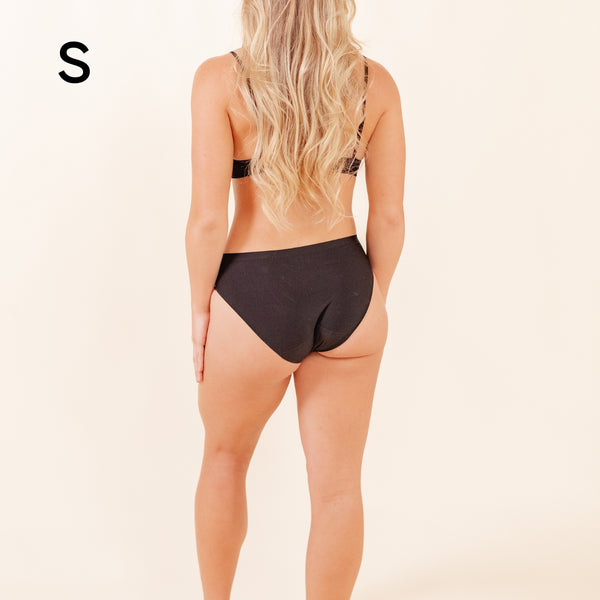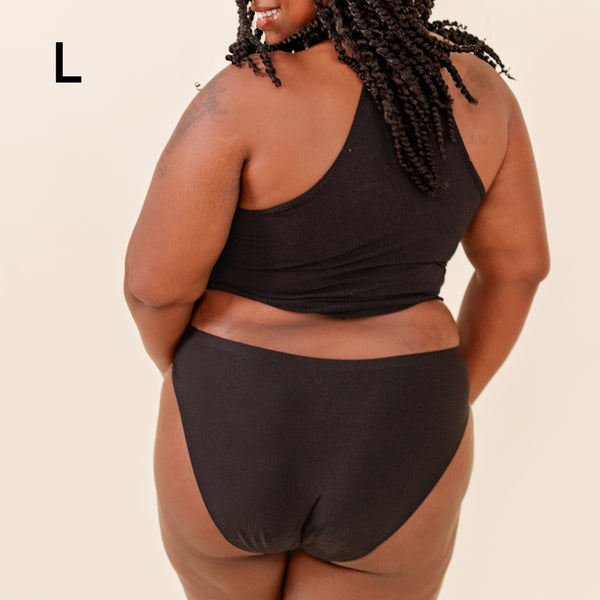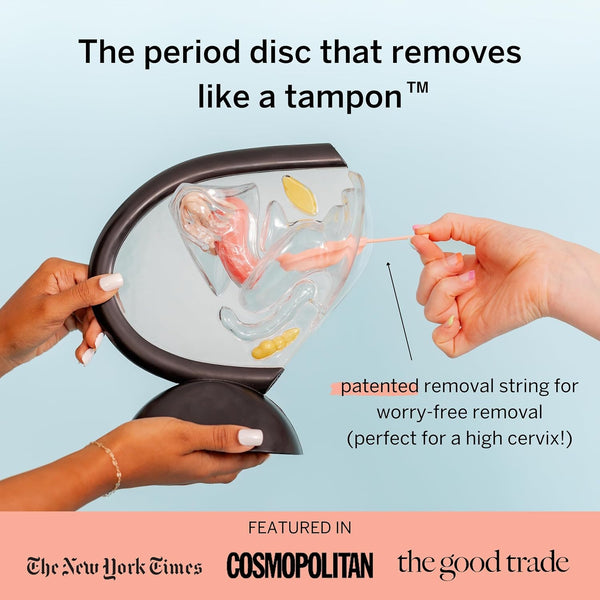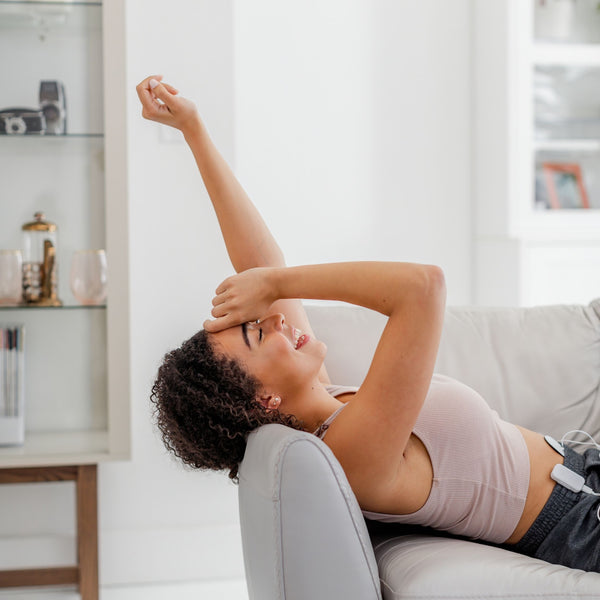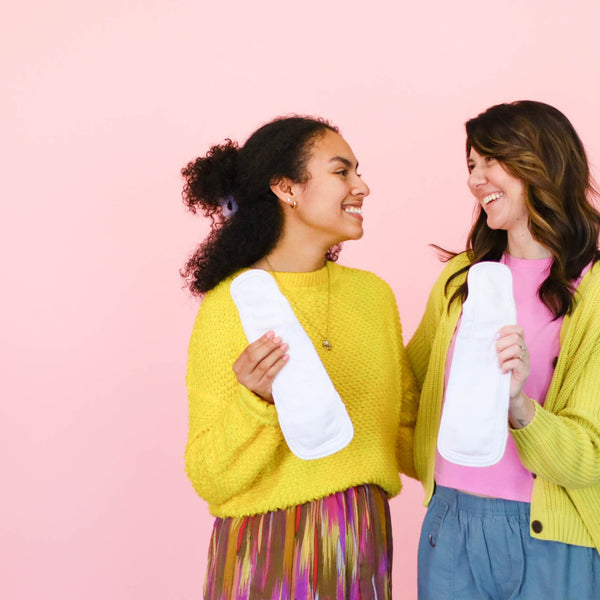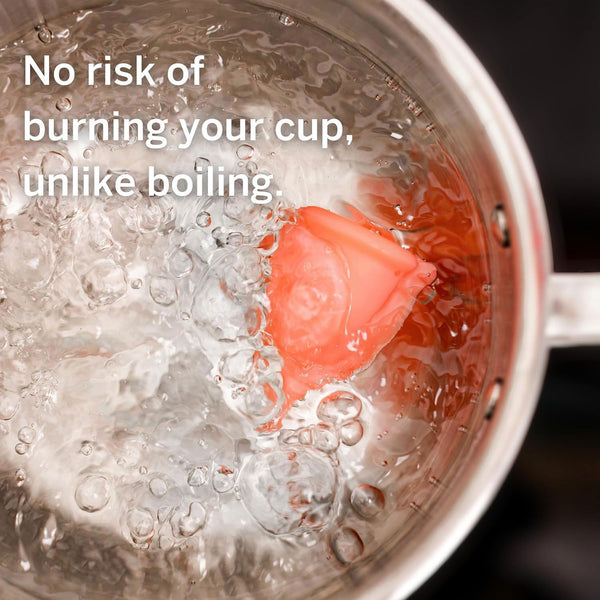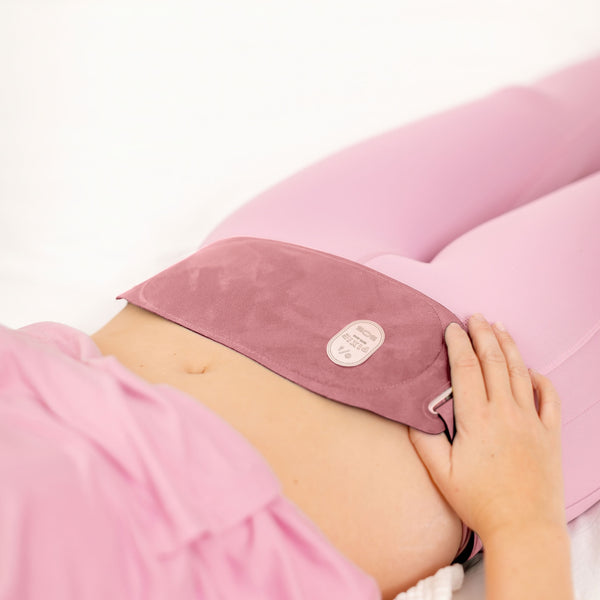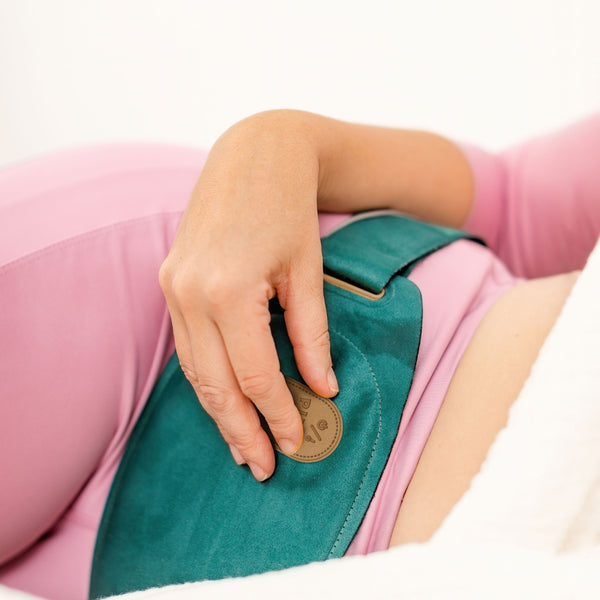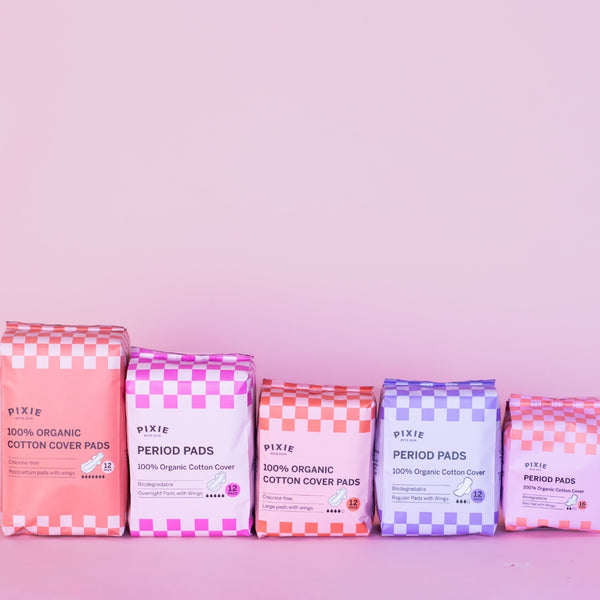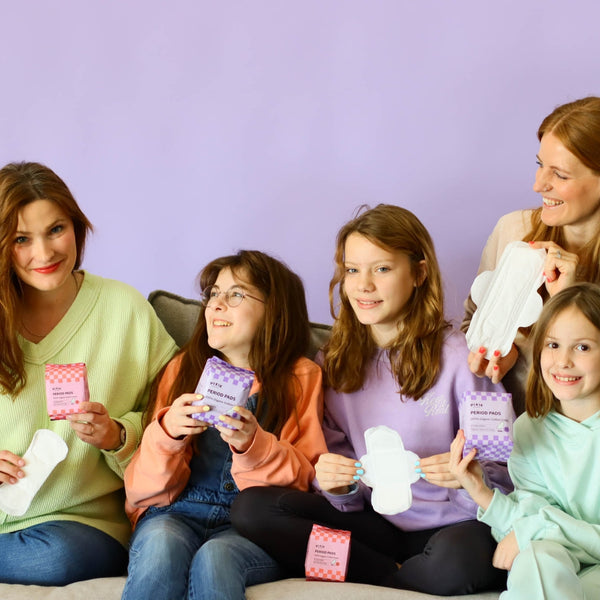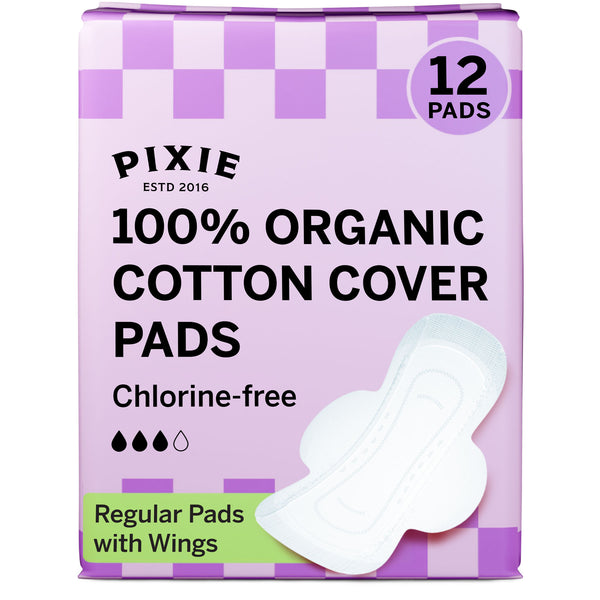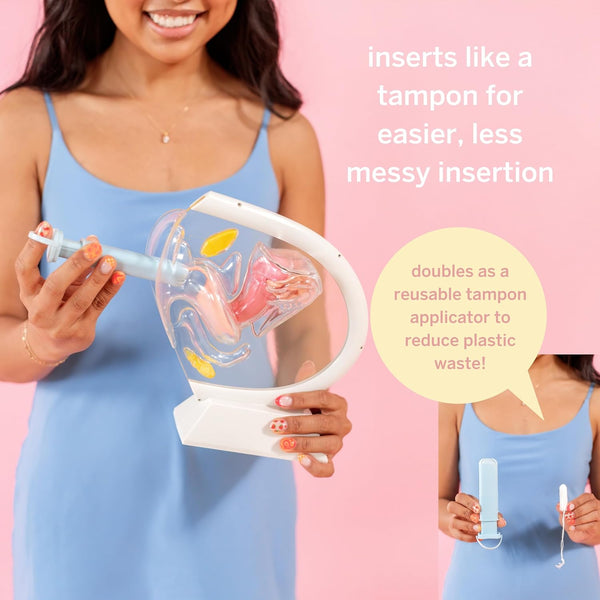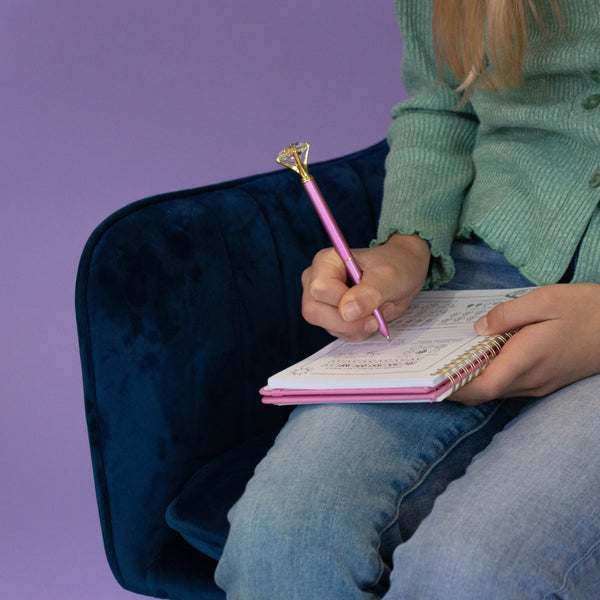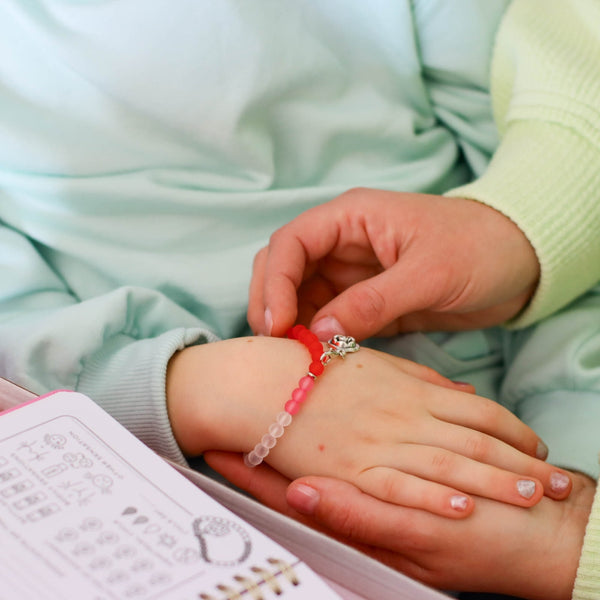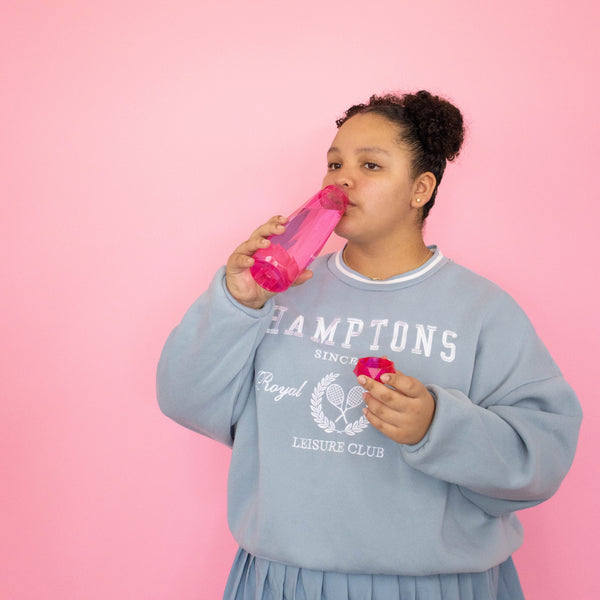A Comprehensive Guide About Reusable Menstrual Cups vs. Discs
Ah, the wonders of being a woman! Every month, we face the challenge of dealing with our monthly visitors – our periods. And we’ve been on a hunt for ways to make our period care more eco-friendly and less wasteful. Sure, we’ve been using tampons and pads for generations. But we also know that these one-time-use products are sabotaging our planet. That’s why more and more of us are turning to reusable menstrual cups and discs as sustainable options.

Making an informed decision about which menstrual product is right for you is imperative. Hence, this comprehensive guide covers everything you need about these innovative menstrual products. We’ll discuss:
- What are menstrual cups vs. discs?
- Their benefits and drawbacks.
- What factors to consider when finding the right menstrual cup or disc?
- Tips for a smooth transition from pads/tampons to reusable menstrual cups and discs.
- Safety tips and tricks for first-time Users of reusable menstrual cups and discs.
So, What Exactly are Menstrual Cups vs. Discs?
Menstrual cups are little, bendy cups made of soft and safe materials like silicone, latex, or elastomer. These materials help collect (NOT ABSORB) blood. You can put them inside your vagina to collect menstrual blood. They come in varying shapes and sizes to fit your vaginal shape and flow.
In contrast, menstrual discs are thin, stretchy discs made of medical-grade silicone or plastics. These materials also help fill blood. Similarly, the tiny hat-like discs are also inserted within your vagina. Additionally, they have only limited shape and size varieties.
Pros of Reusable Menstrual Cups and Discs
Like any menstrual care product, cups and discs have their pros and cons. But these reusable period care items shave a slew of benefits over conventional menstrual supplies. Let’s explore some of these pros, shall we?
1. Menstrual cups and discs are a budget-friendly option
With proper care, menstrual cups can be reused for up to a decade. Meanwhile, menstrual discs are available in both reusable and disposable options. Disposable menstrual discs are cheaper but less eco-friendly, as you’ll need more for one cycle. Reusable menstrual discs cost a bit more.
Conversely, managing your period with tampons and pads can be quite costly. Do you know you spend about $20 monthly on these menstrual products? Over a lifetime, that’s a staggering $18,000 down the drain!
On top of these expenses, most states require you to pay sales tax. And according to the National Organization for Women, this tax costs menstruating females a whopping $150 million annually. You could use this money for other crucial necessities. Instead, you have to fork it over a natural bodily function.
2. Reusable period products save the planet
Reusable menstrual cups and discs are superheroes for the environment! They are eco-friendly because you can wash and reuse them for several cycles, significantly reducing waste.
In comparison, the average female uses about 11,000 tampons or pads in her lifetime. This frequent disposal creates tons of waste. Besides, making and disposing of tampons and pads consumes plenty of energy and resources, harming the ecosystem. As a result, these products end up in landfills or oceans, contributing to pollution and climate change.
3. Reusable period cups and discs are long-lasting
Menstrual cups and discs are also more durable than pads and tampons. Menstrual cups can last for about ten years with proper care. You can reuse them for several cycles before the need to replace them. In contrast, pads and tampons are disposable and must be changed and disposed of every few hours, leading to greater waste.
4. Menstrual cups and discs produce less odor
Using menstrual cups and discs helps eliminate the unwanted odor that usually occurs with disposable pads and tampons. Less to no odor gives you the confidence to go about your day without discomfort or embarrassment.
5. Slim to no chance of leakage
Menstrual cups and discs can hold more menstrual flow than pads and tampons, minimizing leakage. According to the Mayo Clinic, the capacity of a menstrual cup to hold blood is thrice as much as a typical tampon. That’s a huge difference!
6. Fewer swaps required
You can wear menstrual cups and discs for up to 12 hours before needing to be emptied. On the other hand, you’ll have to run to the bathroom to swap out your pad or tampon every few hours.
7. Menstrual cups and discs are non-allergic
These revolutionary menstrual commodities made of medical-grade material are free of any chemicals or fragrances that can irritate the skin. So, they rarely cause an allergic reaction.
Conversely, tampons and pads typically blend cotton, rayon, polyester, or plastic. These substances have the potential to trigger allergic reactions, causing discomfort, burning, itching, or vaginal rashes.
8. Reusable menstrual items have a reduced risk of toxicity
Do you know that a sneaky little bug called Staphylococcus aureus (S. aureus) can cause a deadly infection known as Toxic Shock Syndrome (TSS)? This nasty bug loves to hang out in the synthetic materials commonly used in pads and tampons. Their high absorbency can create the perfect breeding ground for bacteria.
But thanks to the synthetic-free reusable menstrual cups and discs! No synthetics means no TSS – easy peasy! Clinical research suggests that reusable menstrual items are much less likely to cause TSS. They’re made from medical-grade materials that are much safer for your body.
But wait, you may have a question in mind. How can these reusable menstrual products cause TSS if they don’t contain synthetic materials found in pads and tampons? The answer is simple: long-stored menstrual blood also provides a medium for bacterial growth. S. aureus, the bacteria responsible for TSS, can thrive and multiply in this milieu.
A 2019 comprehensive review and analysis looked at 43 papers and 3,000 people. The study found that cups leak less or the same as disposables. The researchers only found five cases of TSS with cups. But even with this limited number of cases, they were uncertain if these users followed the instructions.
9. Best menstrual product if you’re a sports enthusiast or an athlete
Active women must move and groove freely and flexibly while engaging in sports or workouts. Reusable period items offer secure and long-lasting protection during intense exercise, unlike pads and tampons, which may shift or leak.
Moreover, with menstrual cups, you can say goodbye to the hassle of frequent tampon changes and hello to up to 12 hours of carefree, unburdened movement. These little wonders can handle the heavy flow, making them the perfect companion for workouts and sports.
10. No risk of cancers or harm to Your Reproductive Organs
Menstrual products can impact your reproductive health in diverse ways. As a woman, you might worry if they could cause genital tract cancer. But you can put those worries to rest! Menstrual cups are a safe, effective option that doesn’t pose such threats. These cups are crafted from gentle, FDA-cleared materials. They won’t give you cancer or mess with your reproductive organs.
On the other hand, a few studies suggest that using certain kinds of pads and tampons for a long time can be bad for you. These conventional period care items have nasty, harsh chemicals like dioxins and pesticide residues. These compounds can put you at risk of developing genital cancer.
That’s not all, as pads may also contain phthalates which can disrupt your reproductive organs and hormones. By interfering with female hormones like estrogen, they may trigger problems like irregular menstruation.
Cons of Menstrual Cups and Discs
While there are some downsides to using menstrual cups and discs, the story has a silver lining. You can find your groove and make a technique work for you with a bit of practice and experimentation. Below are some of the frequently encountered cons of menstrual cups and discs.
1. They have a slow learning curve
Using cups and discs is a skill that takes time to master, which can be intimidating for some women.
2. Reusable period supplies may seem messy and uncomfortable
Some females may find it icky to empty menstrual blood when using a menstrual cup or disc. They may also experience discomfort while inserting or removing them.
3. Reusable menstrual cups and discs may feel inconvenient in public places
Cleaning a menstrual cup or disc in public restrooms may be daunting, making it less convenient than pads or tampons.
4. Some women might want to skip cups and discs
Menstrual cups or discs may not be a good option for women with certain medical conditions, such as a tilted uterus or pelvic organ prolapse.
5. The menstrual cup may refuse to pop open
Sometimes, menstrual cup folds can be stubborn and refuse to open up once inserted. But fear not! There’s a nifty trick to help crack the code of these pig-headed cup folds. Simply nestle the cup into your vaginal canal using a bit of lube. Then, gently tug or wiggle the stem to help the cup unfold and settle into its comfy, leak-proof spot.
6. Finding the right cup or disc size may be challenging
Finding the perfect fit for a menstrual cup or disc is no easy feat. It’s not as simple as ABC, but a bit more complicated. Unlike disposable products, reusable menstrual cups and discs aren’t one size fits all, so finding the right fit requires trial and error. You can take our quiz to find out your perfect size.
If you choose the wrong fit, you may experience leaks, discomfort, or difficulty inserting or removing the product. Thus, doing your research before buying a cup or disc is imperative.
How to know what menstrual cup or disc will fit you?

Well, many factors can affect how well a cup or disc fits your body, such as:
Cervix height
Your cervix height is a key factor in selecting the correct length of cup or disc for you. You’ll need a shorter cup or disc if your cervix is low. If your cervix is high, you’ll need a longer one.
To measure cervix height, follow these steps:
1. Wash your hands thoroughly.
2. Sit or squat in a comfortable position.
3. Insert your index or middle finger into your vagina.
4. Reach as far as you can until you feel your cervix (your cervix feels like the tip of the nose).
5. If it’s hanging low, and you can gently poke at the first knuckle, you’ve got a low cervix. You’re in the standard range if it takes some effort to reach the second knuckle. But if your cervix is a mystery and hiding way up, then you have a high one!
6. Repeat this process a few times to ensure accuracy and take note of the average measurement. This measurement will help determine which menstrual cup or disc size suits your cervix height.
A bonus tip: The cervix changes position and consistency throughout the menstrual cycle. When your period starts, your cervix drops and hardens. Hence, the ideal time to measure your cervix is when your period is about to start or has just begun. Doing so lets you obtain the perfect measurement and pick the menstrual cup or disc size that fits you seamlessly.
Pelvic floor strength
Your pelvic floor strength is another factor in deciding the right firmness of a cup or disc. You’ll need a firmer cup or disc if your muscles are strong. If your muscles are weak, you’ll need a softer one.
To test your pelvic floor strength, follow these steps:
- Get comfy on your back or side
- Grab and apply a bit of lube on your index finger.
- Slide your index finger into your vagina and gradually curl it while gently pressing the vaginal wall.
- Squeeze and relax your muscles as if stopping and starting to pee.

Great news! If you can sense your muscles tightening, you’re on the right track with your pelvic floor strength.
Menstrual flow
By keeping track of your flow, you can choose the right size to hold your menstrual blood. A heavy flow requires a larger cup, whereas a light flow needs a smaller one. Menstrual flow tracing will also help assess how frequently you must empty your cup or disc.
Using a period tracker app on your smartphone is a great option to keep tabs on your menstrual flow. It enables you to log your period start and end dates. And you can also track your flow intensity, symptoms, and other relevant observations.
Tips for a Smooth Transition from Pads/Tampons to Reusable Menstrual Cups and Discs

Before ditching the tampons or pads for a reusable cup or disc, here’s what you need to learn step by step:
1. Get to know your new buddy. Take some time to read the directions and learn how to use the cup or disc properly. Don’t just rip open the package and shove it in.
2. Practice, practice, practice. Inserting and removing a menstrual cup or disc can take trial and error. Try inserting and removing it a few times when you’re not on your period to get a feel for it.
3. Find a comfortable place to insert and remove the cup or disc. Many people find inserting the cup or disc easier while sitting on the toilet or squatting.
4. Use a water-based lubricant. To insert the cup or disc and facilitate the process, use a water-based lubricant.
5. Get the perfect fit with this taco-inspired trick. Imagine the cup as a taco shell and use your fingers to guide it into place. Grip the cup along its rim and use your fingers to squeeze it into a narrow crescent. Then, hold it with one hand and bring it close to your entrance to slide it in.
6. Place the cup in the correct spot. Slide the cup in like a tampon without a string, keeping the rim up and aiming for the back of your vagina. Stop when the cup is snug and secure, just below your cervix.
7. Rotate the rim. Once in place, give the cup a little twist, and voila! It will unfold and create a snug, airtight seal to prevent leaks.
8. Empty and clean regularly. Do this at least every 12 hours. You can empty the cup in the toilet, rinse with water, and reposition it.
9. Be patient and give yourself time to get the hang of the cup. Getting accustomed to using a menstrual cup or disc may take a few cycles. So, practice patience.
Safety Tips and Tricks for First-Time Users of Reusable Menstrual Cups and Discs
Are you trying reusable menstrual cups and discs for the first time? here are some handy tips for you:
- Wash your hands thoroughly with antibacterial soap before and after handling your cup or disc to avoid spreading germs.
- Boil your cup or disc before and after your period to eliminate any bacteria that may have grown.
- Change your cup or disc every 12 hours or sooner (if the flow is heavy) to prevent the risk of getting TSS. Leaving your cup in for more than 12 hours raise your odds of TSS. So, stay vigilant and follow the guidelines to keep yourself safe and healthy.
- Wash your cup or disc with gentle, fragrance-free soap and water, and avoid harsh chemicals or abrasive materials.
- Make sure your cup or disc fits well to prevent leaks and discomfort. It should rest low in your vagina and seal against the vaginal walls.
- Be mindful of changes in your body or menstrual cycle. And talk to your healthcare provider if you notice any unusual symptoms.
These tips and tricks will help you reap the benefits of reusable menstrual cups and discs safely.
Additional words of wisdom for first-time users
If you’re a beginner in the menstrual cup game, it’s wise to start with a small and soft cup. This will make the insertion and removal process less daunting. Moreover, the softer material will be more comfortable during the initial learning phase.

And remember to apply the lube before inserting the cup to minimize discomfort. Once you’ve mastered the basics, you can experiment with various sizes and levels of firmness to find your perfect match.
Resources
Zulaika, G., Lenchner, M., Mason, L., Sivakami, M., Nyothach, E., Unger, H., Laserson, K., & Phillips-Howard, P. A. (2019). Menstrual cup use, leakage, acceptability, safety, and availability: A systematic review and meta-analysis. The Lancet. Public Health, 4(8), e376. https://doi.org/10.1016/S2468-2667(19)30111-2
NOW. Female Homelessness and Period Poverty. Retrieved on May 2023 from https://now.org/blog/female-homelessness-and-period-poverty/
Mayo Clinic Health System. Menstrual cups: Why the recent increase in popularity? Retrieved on May 2023 from https://www.mayoclinichealthsystem.org/hometown-health/speaking-of-health/menstrual-cups-vs-tampons-things-you-might-not-know-about-the-cup
Lin, N., Ding, N., Meza-Wilson, E., Devasurendra, A. M., Godwin, C., Park, S. K., & Batterman, S. (2020). Volatile organic compounds in feminine hygiene products sold in the US market: A survey of products and health risks. Environment international, 144, 105740. https://doi.org/10.1016/j.envint.2020.105740 Park, C. J., Barakat,
R., Ulanov, A., Li, Z., Lin, C., Chiu, K., Zhou, S., Perez, P., Lee, J., Flaws, J., & Ko, C. J. (2019). Sanitary pads and diapers contain higher phthalate contents than those in common commercial plastic products. Reproductive toxicology (Elmsford, N.Y.), 84, 114. https://doi.org/10.1016/j.reprotox.2019.01.005
Our Top Picks For You
-
Period Disc & Applicator Kit
![]()
- Regular price
- $48
- Sale Price
- Regular price
-
$55 - $48
- Unit price
- per
Sold out -
Reusable Organic Cotton Pads
![]()
- Regular price
- $28
- Sale Price
- Regular price
-
$34 - $28
- Unit price
- per
Sold out -
Disposable Organic Cotton Pads
![]()
- Regular price
- $7
- Sale Price
- Regular price
-
$9 - $7
- Unit price
- per
Sold out -
Combo Disc + Applicator Bundle
![]()
- Regular price
- $42
- Sale Price
- Regular price
-
$49 - $42
- Unit price
- per
Sold out














